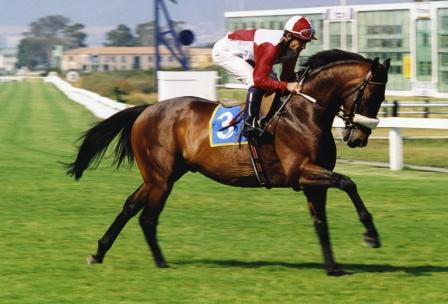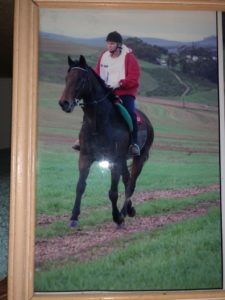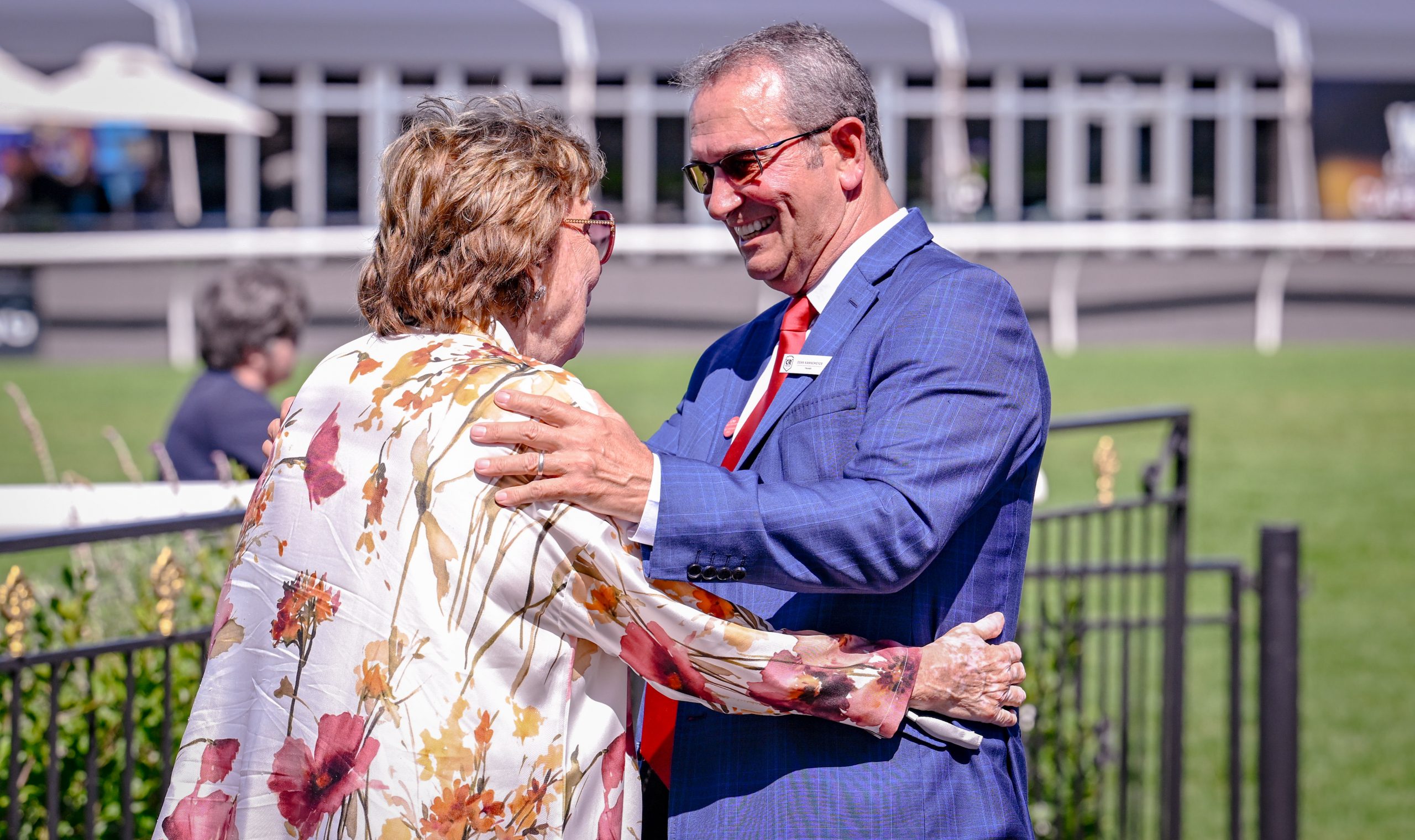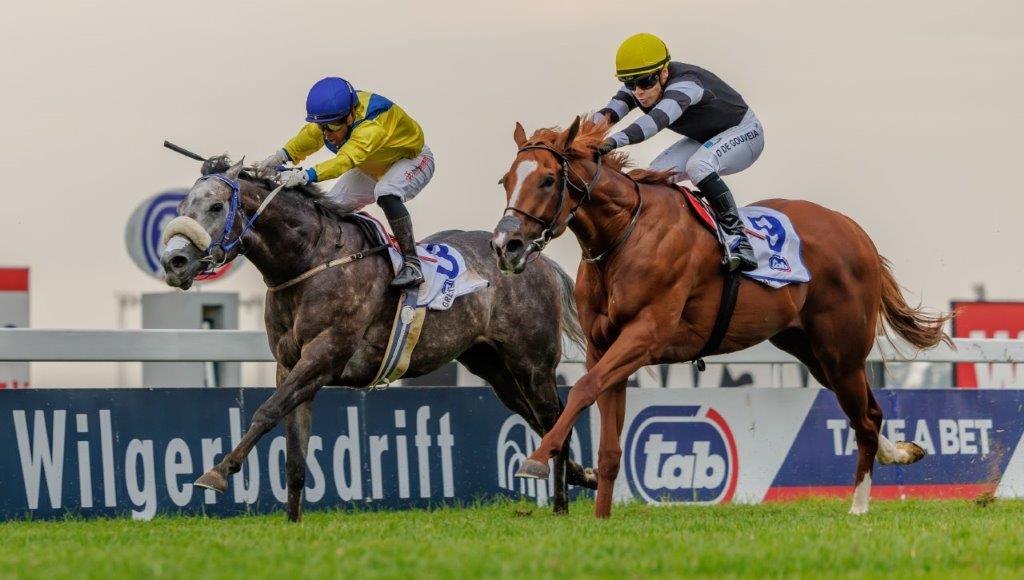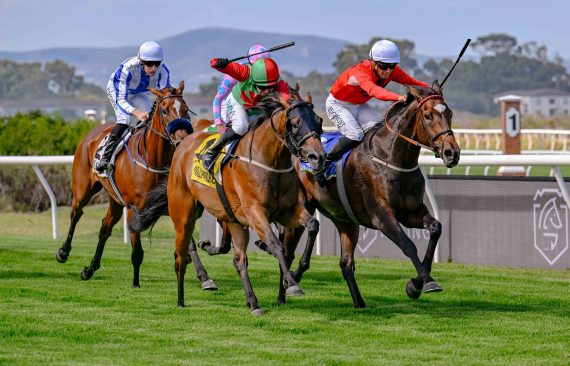South Africa’s 2000 Horse Of The Year, Celtic Grove, died on Wednesday, 22 August 2018 at his home at Lammerskraal. He was 21 years old.
According to David M Eagleman, there are three deaths. ”The first is when the body ceases to function. The second is when the body is consigned to the grave. The third is that moment, sometime in the future, when your name is spoken for the last time.” If that is true, the Celtic Grove story is far from over.
The arrival of the big bay son of Fort Wood, all the way back in 1997, formed an epoch in the history of the Ceres nursery, signalling the rebirth of the farm and the start of great things to come. Interestingly, he was not from an old established Lammerskraal family. Manager Sally Bruss explains, “When I started working here, we mainly had Argentinian mares. Rattray decided to totally change how he was doing things and decided from then on he would buy decent race fillies off the track and group winning mares offered on sales.”
“We went to the Pietermaritzburg sales and bought Welsh Woman (the dam of Celtic Grove). At that same sale we also bought Triumphant Lady and Saintly Lady – that was the start of Lammerskraal Stud.”
Founding a dynasty
Asked what made them select Welsh Woman in particular, Sally says it was mainly her race record that made her stand out. “In Ireland, she was just beaten in the Moyglare Stakes and then she came to South Africa and won a number of races. She was a good race filly here.” In total, Welsh Woman won 7 races in SA and Britain over 1000- 1200m and placed 18 times.
“She was a real sprinting type to look at – a bit small, but real quality,” recalls Sally. “Her sire wasn’t a great success and he was also small, but high quality.”
The mating to Fort Wood was mainly chosen for size and Sally says although both Welsh Woman and her daughters were small, they didn’t throw small foals.
Celtic Grove arrived in 1997 and Sally remembers him as a strapping colt. “He was a real little man. I’ve got photos of him as a foal next to his dam, he was this beautiful big strong colt. Plain, but so well made, an imposing horse. ”
Ironically, the little mare had produced such a big, robust foal that they chose not to offer him for sale. “He was such a huge horse, he looked like a Warmblood. Mr Rattray referred to him as ‘the carthorse’”. So they decided to keep him and Celtic Grove was broken in and pre-trained on the farm, before being placed in the hands of David Ferraris.
Sally confides, “Between you and me, when we were breaking him in, he was a frikkin’ handful.” The big bull of a horse would go on to build a reputation for being a lot to handle and Geoff Woodruff, who handled him during the latter part of his career recalls, “He was a very likable person at home but the jockeys were terrified of him because he could pull ferociously in a race!”
Sally continues, “He was initially nominated to run fairly early. The day of his first race, Piere Strydom cantered him down to the start, but said to the vet that the horse felt unsound and they scratched him. He didn’t get nominated again for a long time, but once he did, he was great from then on.”
Great From Then On
Celtic Grove finally debuted over 1000m at the Vaal on 19 January 2000, where he finished 2.2 lengths 6th under Piere Strydom. He saluted at all three of his next starts, closing his 2yo campaign with earnings of R94,062.
However, it was as a 3yo that he really hit his straps, taking the Gr2 Golden Horseshoe, Gr2 Skeaping Trophy and Gr2 Dingaans on the trot. He traveled to the Cape for an agonising 0.05 length second to Ethno Centric in the Gr1 Cape Guineas. Back on home turf in Johannesburg, he strung together another two wins, including the Gr2 Gauteng Guineas and went down 2.25 lengths in the SA Classic, before dominating the Durban season. He collected a Gr1 double in the SA Guineas and Gold Challenge, before a rousing second in the 2001 Rothmans July, conceding both weight and age to Trademark, who held him off by just over a length.
It was heady times for the young stud farm. “All I remember is the general feeling that they didn’t fancy him,” recalls Sally. “All his good runs were over a mile and they said he would never stay, so he surprised everybody there.”
It was however, enough to convince the ARCSA panel to bestow the titles of 3YO Classic Horse as well as Horse of the Year honours for the season.
Lammerskraal had arrived.
As an older horse, Celtic Grove lost his way somewhat and although he campaigned for several more seasons, he never quite regained his glittering Classic form, latterly doing duty as a pacemaker for stablemate Yard-Arm.
The Angels’ Share
They say horses don’t care how much you know, till they know how much you care and it is true. In nature – as with most things in life – things work in a delicate balance. Well, if they are to function successfully anyway. And one has to give in order to receive. It is an unwritten contract, incurring expenses that are impossible to justify on a balance sheet, but one that any industry acknowledges innately. It is best illustrated in the whisky industry where the lost or evaporated portion is quaintly referred to as ‘the Angels’ share’.
There are no set recipes or prescriptive measures in place, but be sure that someone, somewhere keeps meticulous score. All good farmers know this. All good stockmen too. But there are few who uphold their end of the bargain as conscientiously as Sally, whose policy that the horses look after the farm and the farm looks after them is one of the most sacred pillars of the stud. Many a Lammerskraal champion has made their way back to the stud to live out a well-earned retirement as a lead horse, a yearling nurse maid or even just keeping the grass tidy in the avenues between the paddocks. “It’s my uphill battle,” she smiles, “but after they’ve served us so well, we’ve got to look after them. It’s our way of paying it forward.” Every foal is produced on the same contract and on the same good faith and their results stand testimony.
Retirement
Celtic Grove retired with a career total of 10 wins and 11 places from 37 starts. As the farm’s first Horse of the Year, Celtic Grove was offered pride of place back at Lammerskraal. “He was not unsound, but he’d been used a lot, so he came back to the farm and spent his entire life here after he retired.”
Well, almost retired. Somewhat unusually, Celtic Grove served a brief stint as Sally’s endurance horse.
“I worked hard at getting him fit for that – we did miles and miles of trotting and hacking. If I wanted to get to the front, I would allow him to lope along and he would do it without pulling. We’d pull up and walk for 10 minutes and all the Defence Force guys on their Arabs would come flying past. Then we’d trot again – he had this amazing trot on him – and he would reel in these Arabs. I did quite a bit of work with him on the heart monitor so I knew the trotting wasn’t exerting him at all. Then I’d let him gallop the last few miles – and no matter how hard the Defence Force guys pushed those Arabs, they had no chance! He was properly fit and he did it so easily. I had to ride in the dark in the mornings and at night because of my working hours, so it didn’t last too long, but he loved it and was very good to ride,” she reminisces fondly.
Asked how she managed the famously big, strong horse, she says, “He really was the most powerful horse to ride, but funnily enough, I could control him perfectly at the endurance rides.”
“After that, if we ever tried to ride him – an idea we gave up on quite quickly,” she adds, “there was just no ways, he was far too powerful. No-one could ride him. He didn’t run away with you, but he just wanted to gallop on his terms.”
So Celtic Grove spent the remainder of his days peacefully on farm slopes alongside his buddy Set Afire, another Lammerskraal soldier.
Legacy
His departure will leave a large hole. “He put us on the map and it was a fantastic run, particularly as a 3yo. It was incredibly exciting,” remembers Sally. “Especially because we bred Yard-Arm shortly after. I used to go to the Cape Awards and the Equus Awards and there were always lots of cups coming home. Unfortunately before Pieter Graaff bought the farm, Rattray didn’t buy a single female in 10 years. The stud took a massive dip, the foal numbers dropped to under 30 – we’re just starting to recover. So there’s been a deadly dull patch in between, but I feel we will come back strongly,” she says resolutely.
But it wasn’t so much his race record, as the horse himself that was so special. “He was actually a lovely character – he was not strong in a horrible way. He was this big, powerful imposing presence. And he was always there. Although we weren’t using him, you were always aware of him. Our grooms were up at the 2yo sale at the time he died, and when they heard the news, one of the guys sent me photos he’d taken at the TBA museum with ‘RIP, my Champ.’”
Lammerskraal have a burial ground for all their horses and it is fitting that Celtic Grove will be interred on the farm he helped build. Sally puts up name plates for all the top horses and the big galloping ‘carthorse’ will take pride of place below his dam, Welsh Woman. It will give him an ideal vantage point from which to watch the farm’s progress.
While Celtic Grove’s body may have ceased to function and been consigned to the grave, thanks to Sally and Lammerskraal, his name will still be spoken for many years to come.


